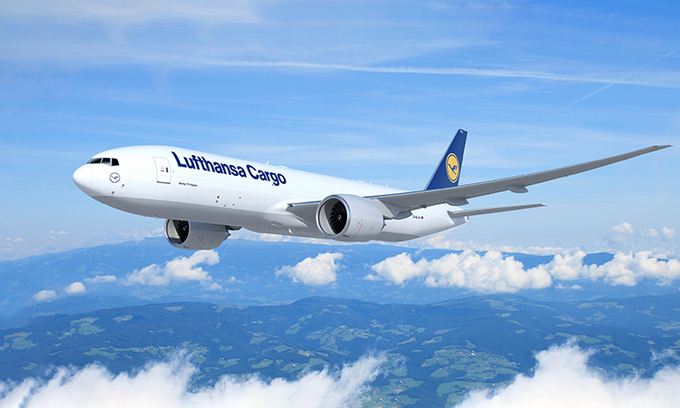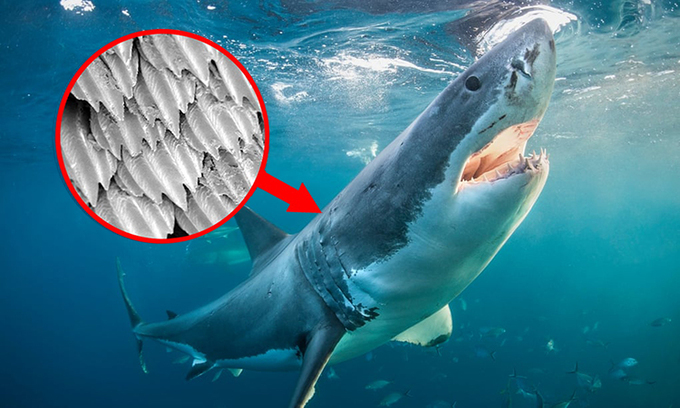The low-friction film consists of riblets measuring about 50 micrometers that imitate the properties of sharkskin and allow air to flow more smoothly over the aircraft during flight. Sister company Lufthansa Technik developed the new AeroShark technology with German chemical manufacturer BASF to meet aviation needs and estimates it can reduce drag by more than 1%.
Lufthansa said the special coating on its 10 777s in 2022 will provide annual savings of about 3,700 tons of jet fuel and nearly 11,700 tons of carbon dioxide emissions — the equivalent of 48 individual freighter flights from Frankfurt, Germany, to Shanghai. Lufthansa Cargo currently operates nine 777s, but is adding another one later this year.
Aircraft surfaces are exposed to UV radiation, temperature and pressure fluctuations at high altitudes that can alter smoothness. The BASF coating is designed to be weather resistant and simple to apply.
The technology is one of several steps Lufthansa’s cargo division is taking to achieve carbon neutrality by 2050.
“We are proud that we will now be able to operate our entire freighter fleet even more efficiently in the future thanks to sharkskin technology and reduce the carbon footprint of our modern fleet further,” said CEO Dorothea von Boxberg in a statement.

Lufthansa Technik, the engineering services and maintenance subsidiary of Deutsche Lufthansa AG (DXE: LHA), is responsible for the material specification, obtaining approval from aviation authorities and applying the technology during regular maintenance intervals. The company said it will obtain a Supplemental Type Certificate, which is required when an aeronautical product is modified from its original design, from the European Union Aviation Safety Agency (EASA).
The aviation industry has been researching the use of sharkskin for aircraft for many years. In late 2019, Lufthansa Technik and BASF fitted almost the entire lower half of a Boeing 747-400 fuselage with 500 square meters of jointly developed sharkskin surface and had the modification certified by EASA. The aircraft subsequently validated the savings potential of the technology on long-haul services during 1,500 hours of flight, according to BASF.
The sharkskin modification reduced emissions on the flights by about 0.8%, but BASF said the savings for the 777 freighters are estimated to be higher because the film will be applied to an even greater area because of the absence of windows.
Lufthansa Technik and BASF said they will continue to develop the technology to include additional aircraft types and even larger surfaces to help airlines meet greenhouse gas targets. Initial models show that the use of sharkskin technology could eventually reduce CO2 emissions by as much as 3%.
According to freightwaves.com















